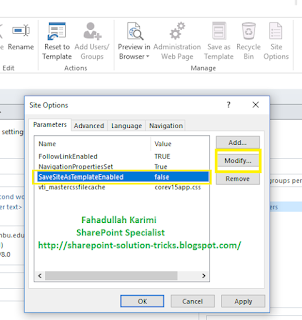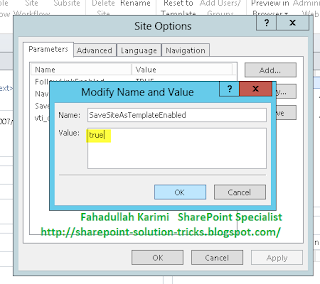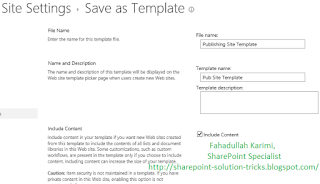Issue: While trying to update the page layout for any page in SharePoint, I realized that Page Layouts button was disabled!
Reason: There can be many reasons for this, but here are
the first things to check
1.
SharePoint Server Publishing Infrastructure feature should be activated at site
collection level.
2. SharePoint server publishing feature should be activated at site level.
2. SharePoint server publishing feature should be activated at site level.
You
should now be able to see that button in top ribbon under Page Actions tab.
But, if you are like me and working in SharePoint 2010 and if you see the option after publishing feature is enabled, but if it is DISABLED, try this –
Thank you very
much
Fahadullah Karimi
SharePoint Specialist
| How to Save Site as Template in Publishing Site Template in SharePoint 2013 | Power shell to delete SharePoint Group |





 Next Post
Next Post



